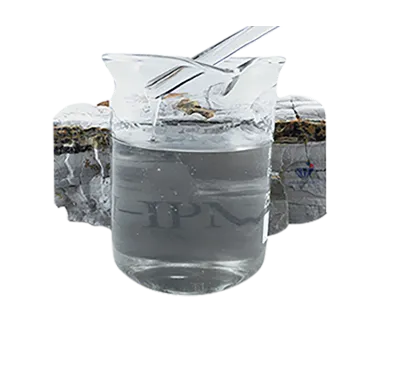
Dek . 12, 2024 09:46 Back to list
hpmc properties
Understanding HPMC Properties and Their Applications
Hydroxypropyl Methylcellulose (HPMC) is a semi-synthetic polymer derived from cellulose, a naturally occurring polymer. Known for its multifaceted properties, HPMC plays a crucial role in various industries, including pharmaceuticals, food, construction, and cosmetics. This article explores the fundamental properties of HPMC and its diverse applications, demonstrating its significance in modern technology and daily life.
Chemical Structure and Properties
HPMC consists of a cellulose backbone that has been chemically modified through etherification. The incorporation of hydroxypropyl and methyl groups enhances its solubility in water and contributes to its rheological properties. The degree of substitution, which refers to the number of hydroxyl groups replaced by hydroxypropyl and methyl groups, is a key characteristic that influences HPMC's properties. Depending on the specific formulation, HPMC can exhibit different viscosities, surface activities, and gel-forming abilities.
One of the standout features of HPMC is its ability to form clear, viscous solutions. When dissolved in water, HPMC swells and forms a gel-like consistency, making it an excellent thickening agent. This property is particularly advantageous in food applications where consistency and texture are crucial. Moreover, HPMC is non-ionic, which means it does not interact with ions in solution, a characteristic that ensures stability and performance in various environments.
Versatile Applications
In the pharmaceutical industry, HPMC is extensively used as a binder and film-coating agent. Its ability to form strong films is paramount in sustaining the release of active pharmaceutical ingredients. HPMC can be found in tablet formulations, where it not only functions as a binder to hold the ingredients together but also helps to control the release profile of the drug. Additionally, its compatibility with various drugs underlines its importance in developing oral, topical, and even ophthalmic formulations.
hpmc properties

2. Food
HPMC’s application in the food industry cannot be overstated. It is commonly used as a thickener, emulsifier, and stabilizer in sauces, dressings, and bakery products. For example, when added to gluten-free baked goods, HPMC enhances the texture and moisture retention, resulting in improved quality. Its low calorie and non-allergenic properties make it an attractive choice for health-conscious consumers. HPMC is also a crucial ingredient in dietary supplements, providing the necessary binding and texture while being safe for consumption.
3. Construction
In construction, HPMC is used in cement-based products, such as tile adhesives and plaster. It improves workability, adhesion, and water retention in mortar and concrete, ensuring better performance during application. The water-retaining property of HPMC aids in preventing premature drying, which can lead to cracking and reduced strength. This application underscores HPMC's versatility beyond the realms of food and pharmaceuticals into essential construction materials.
4. Cosmetics and Personal Care
In cosmetics, HPMC is favored as a thickener and stabilizer in creams, lotions, and shampoos. Its ability to create smooth textures and enhance viscosity makes it a popular choice among cosmetic formulators. Furthermore, HPMC's non-toxic and hypoallergenic nature ensures that it is suitable for sensitive skin formulations, positioning it as a safe choice for various beauty products.
Conclusion
The myriad properties of Hydroxypropyl Methylcellulose make it an indispensable ingredient across various industries. Its versatility, combined with excellent thickening, binding, and film-forming abilities, ensures that HPMC continues to be integral in the development of innovative products. As industries evolve and consumer demands change, the adaptability of HPMC positions it as a polymer with increasing relevance, promising a bright and multifaceted future in applications that enhance everyday life.
-
Versatile Hpmc Uses in Different Industries
NewsJun.19,2025
-
Redispersible Powder's Role in Enhancing Durability of Construction Products
NewsJun.19,2025
-
Hydroxyethyl Cellulose Applications Driving Green Industrial Processes
NewsJun.19,2025
-
Exploring Different Redispersible Polymer Powder
NewsJun.19,2025
-
Choosing the Right Mortar Bonding Agent
NewsJun.19,2025
-
Applications and Significance of China Hpmc in Modern Industries
NewsJun.19,2025







